
Why It’s Harder for Asians to Get Into Med School
Asian applicants need the highest MCAT & GPA of any group. This is what that means for Asian med school applicants.
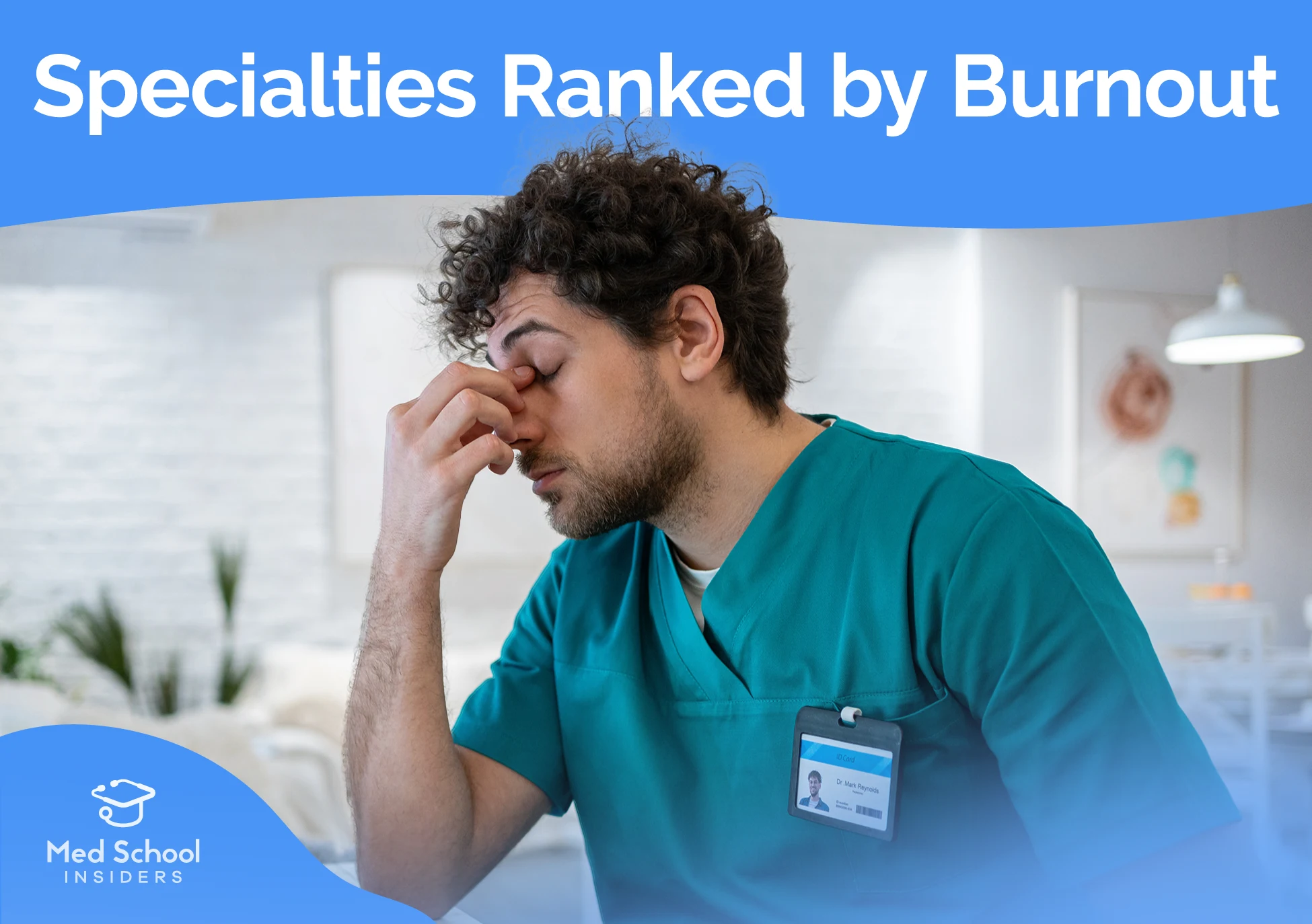
Imagine this is the day you have to look forward to: A 12-hour shift that stretches to 14 hours.
Mountains of paperwork that keep you at the hospital long after your patients have gone home. Constant interruptions, impossible caseloads, and the sinking feeling that you’re always behind. No time for lunch, barely time to think, and when you finally drag yourself home, you’re too emotionally drained to connect with your own family.
This isn’t an occasional bad day—it’s the reality for physicians in some specialties where burnout rates exceed 60%. But here’s what might surprise you: other specialties have burnout rates below 40%, with doctors reporting high job satisfaction and manageable work-life balance.
The difference isn’t just preference—it’s dramatic enough to completely change your experience as a physician.
Today, we’re ranking all 25 medical specialties from lowest to highest burnout rates using the latest 2024 physician burnout data. This breakdown reveals crucial differences in work-life balance and job satisfaction that could define your entire career.
By the end, you’ll discover which specialty has a shocking burnout rate that’s driving doctors away—and which ones keep physicians fulfilled and energized.
Let’s start with the specialties where burnout rates are lowest and doctors report feeling most fulfilled.
At the bottom of our list with the lowest burnout rate, plastic surgery sits at just 37%. These surgeons specialize in reconstructing or reshaping tissue for both functional and aesthetic purposes.
The combination of almost the highest compensation in medicine at $619,000 annually, flexible practice options, and minimal insurance hassles in aesthetic surgery creates an environment with exceptional job satisfaction.
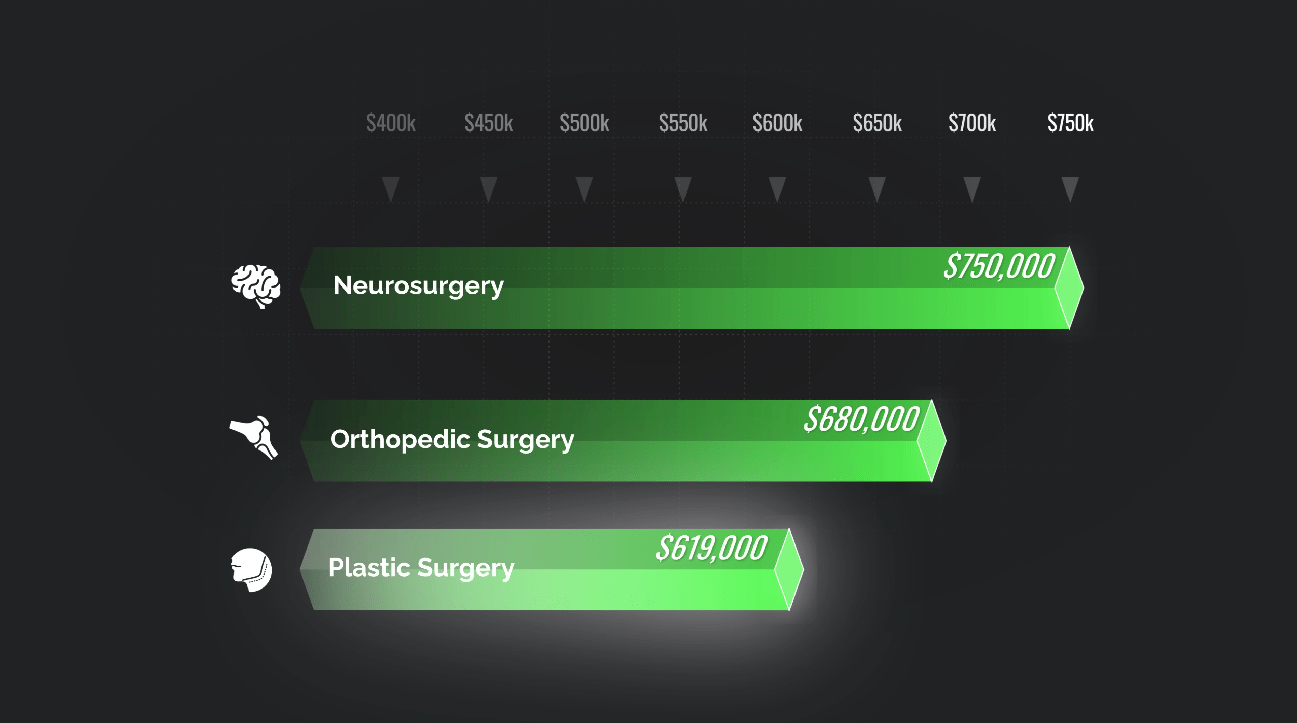
Whether performing life-changing reconstructive work or helping patients feel confident through cosmetic procedures, plastic surgeons report the highest levels of fulfillment.
Psychiatry sits at 39% burnout. These physicians treat mental health disorders and psychological distress.
The lower burnout rate reflects reasonable work hours, good work-life balance, and the satisfaction of building longitudinal relationships with patients. The slower pace, limited emergency call, and flexibility to customize practice settings contribute to better physician well-being.
Tied with psychiatry, ophthalmology has a 39% burnout rate. These physicians treat eye and vision disorders with a mix of medical and surgical approaches.
Regular hours and the satisfaction of dramatically improving patients’ vision and quality of life contribute to lower burnout levels. Most ophthalmologists work predictable 8-to-5 schedules with minimal weekend call.
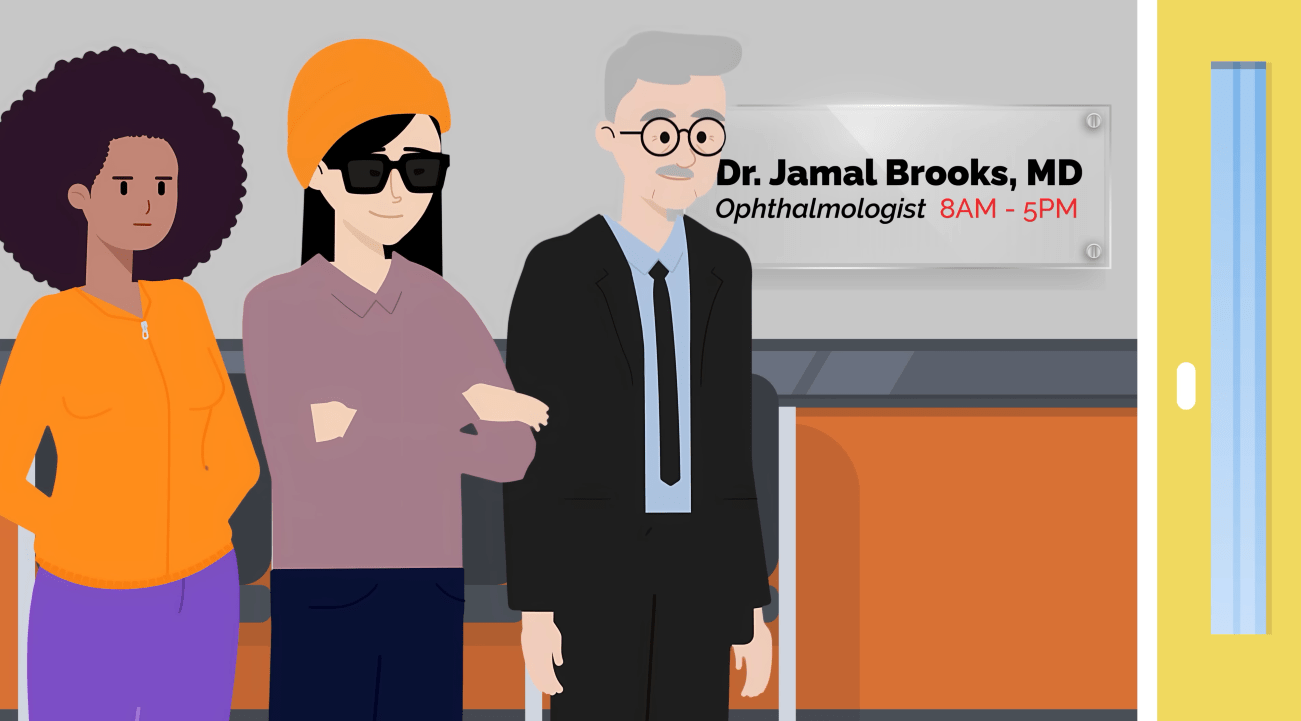
Pathology has a 41% burnout rate. These physicians examine tissues and fluids to diagnose diseases, typically working regular hours with minimal patient interaction.
The lower burnout reflects the predictable schedule, intellectual satisfaction of making diagnoses, and reduced pressure from direct patient care responsibilities. Most pathologists work standard business hours with limited on-call duties.
ENT sits at 43% burnout. These surgeons treat conditions of the ears, nose, throat, and head and neck region.
The combination of good work-life balance, high compensation at just over $500,000 annually, and the ability to choose between clinic and OR time helps keep burnout relatively low. ENT offers flexibility between outpatient procedures and complex surgeries.
We explore the five specialties with the lowest burnout in much more detail in our “5 Medical Specialties with the Least Burnout” video.
Endocrinology has a 44% burnout rate. These physicians manage hormone disorders, including diabetes, thyroid conditions, and metabolic diseases.
The chronic nature of many endocrine conditions requires long-term patient relationships, which can be rewarding but also challenging when patients struggle with lifestyle modifications needed for management.
Neurology also sits at 44%. Neurologists diagnose and treat disorders of the brain, spinal cord, and nervous system.
While intellectually stimulating, the field involves many progressive, incurable conditions like Alzheimer’s and ALS. The challenge of delivering difficult diagnoses and limited treatment options for some neurological conditions contributes to moderate burnout.
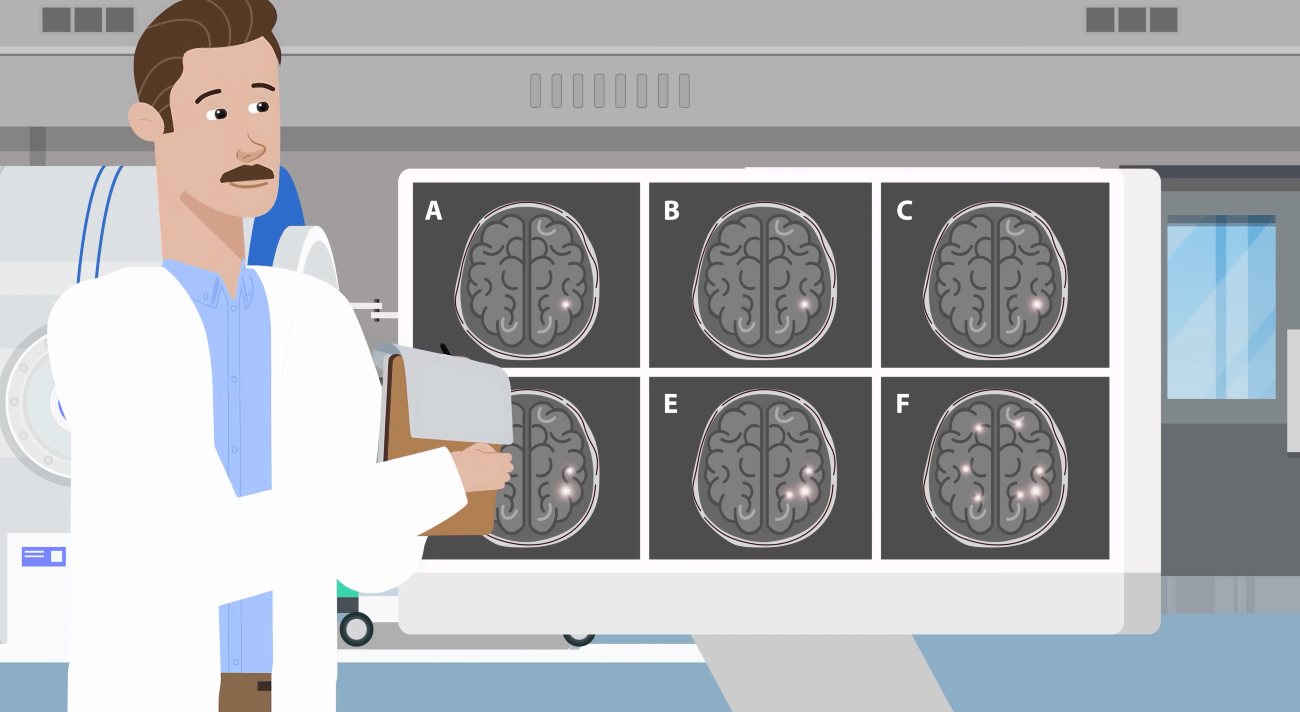
Orthopedics rounds out the 44% group. These surgeons treat musculoskeletal conditions and typically enjoy high compensation at over $650,000 annually.
The physical demands of surgery, long procedures, and high patient expectations create stress, but the ability to restore function and mobility provides significant job satisfaction.
Critical care medicine, dealing with ICU patients, has a 45% burnout rate. These physicians work in high-intensity environments with life-or-death decisions daily.
However, the lower-than-expected burnout rate may reflect that doctors choosing critical care are drawn to high-stress situations and find meaning in saving critically ill patients.
General surgery also sits at 45%. While historically known for brutal hours and high stress, recent work-hour restrictions and improved training conditions have helped reduce burnout compared to previous generations.
The satisfaction of performing life-saving procedures and seeing immediate results helps balance the demanding schedule and high-pressure environment.

Surprisingly, dermatology has a 46% burnout rate despite being known for excellent work-life balance and high compensation at nearly $500,000 annually.
The moderate burnout may stem from high patient expectations in cosmetic procedures, challenging insurance authorizations for treatments, and high patient volume. A recent report estimated that dermatologists see an average of 5 patients per hour.
Want to know which doctors see the fewest patients? Check out our video linked below.
PM&R also sits at 46%. These physicians help patients restore function after injuries or disabilities. While typically offering good work-life balance, the emotional challenge of helping patients adapt to permanent disabilities can be draining.
The specialty has become increasingly competitive in recent years, which may be adding pressure on practitioners.
Nephrology, focusing on kidney diseases, has a 46% burnout rate. These physicians often manage chronically ill patients on dialysis and face the challenge of limited treatment options for end-stage kidney disease.
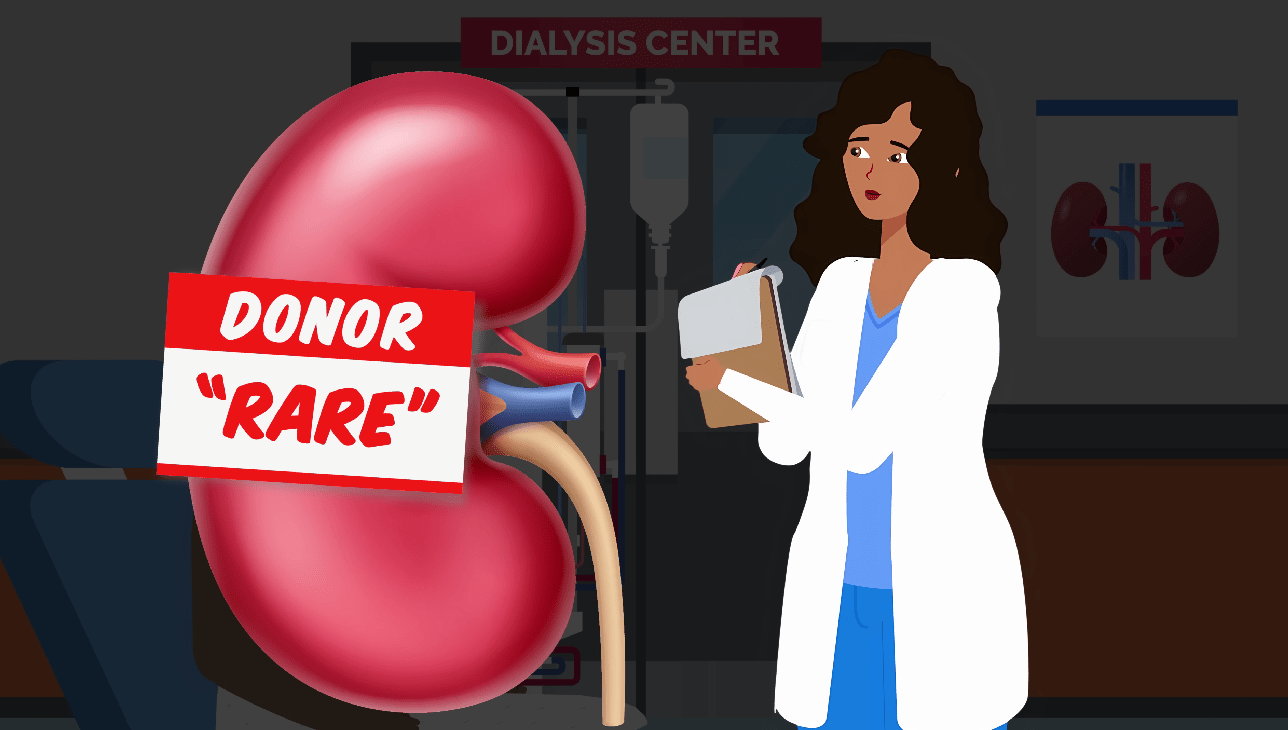
The emotional burden of managing patients with progressive, incurable conditions contributes to moderate burnout levels.
Cardiology sits at 47% burnout. These physicians treat heart conditions and often work in high-stress environments, dealing with heart attacks and other cardiac emergencies.
While well-compensated at over $560,000 a year, cardiologists face pressure from life-threatening conditions and the need to make quick, critical decisions. Interventional cardiologists, in particular, face demanding call schedules for emergency procedures.
Just below the 50% mark, urology has a 49% burnout rate. Urologists treat conditions of the urinary tract and male reproductive system, combining both medical and surgical approaches.
The specialty offers solid compensation at nearly $530,000 and a reasonable work-life balance, but emergency cases like kidney stones and urological traumas can create unpredictable schedules that contribute to stress.
Internal medicine rounds out the 50% group. As the largest specialty in medicine, internists provide primary and specialty care for adults, often serving as the foundation for many subspecialties.
The high patient volumes, extensive charting requirements, and pressure to see patients quickly while maintaining quality care create significant stress. Many internists feel rushed through patient encounters, reducing job satisfaction.
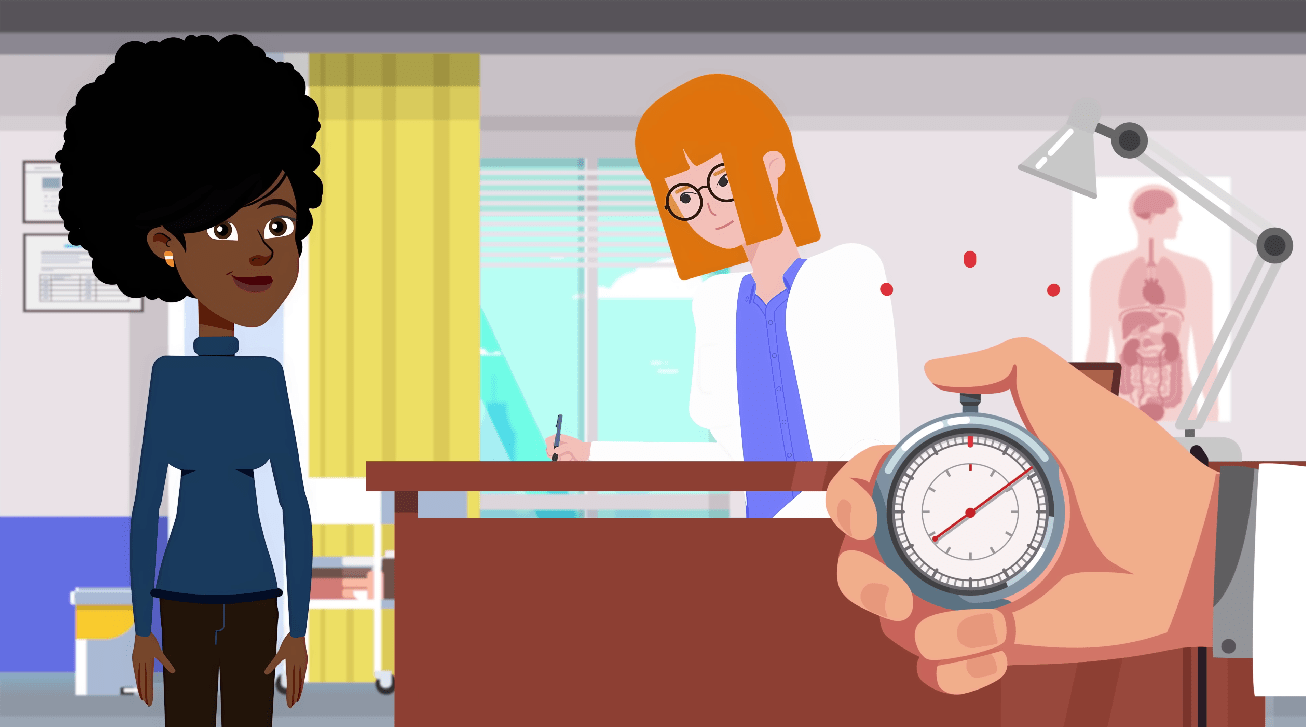
Gastroenterology, dealing with digestive system disorders, reports 50% burnout. These physicians perform numerous procedures like colonoscopies and endoscopies while managing complex conditions like inflammatory bowel disease and liver problems.
High patient volumes and procedure demands, combined with significant administrative requirements, contribute to the burnout rate despite above-average compensation.
Also at 50%, anesthesiology involves administering anesthetics and managing patients during surgery. While procedures are typically scheduled, the pressure of keeping patients safe during operations and managing potential complications creates consistent stress. There may also be added stress and tension in the OR working alongside Type A personalities, depending on the surgeon.
On-call responsibilities for emergency surgeries, combined with the need for constant vigilance during procedures, contribute to the moderate burnout rate.
Pulmonary medicine, focusing on lung and respiratory disorders, has a 50% burnout rate. These physicians often work in ICU settings, dealing with critically ill patients and high-stress situations involving life support decisions.
The COVID-19 pandemic particularly impacted pulmonologists, who were on the front lines treating ventilated patients and making difficult end-of-life decisions for families.
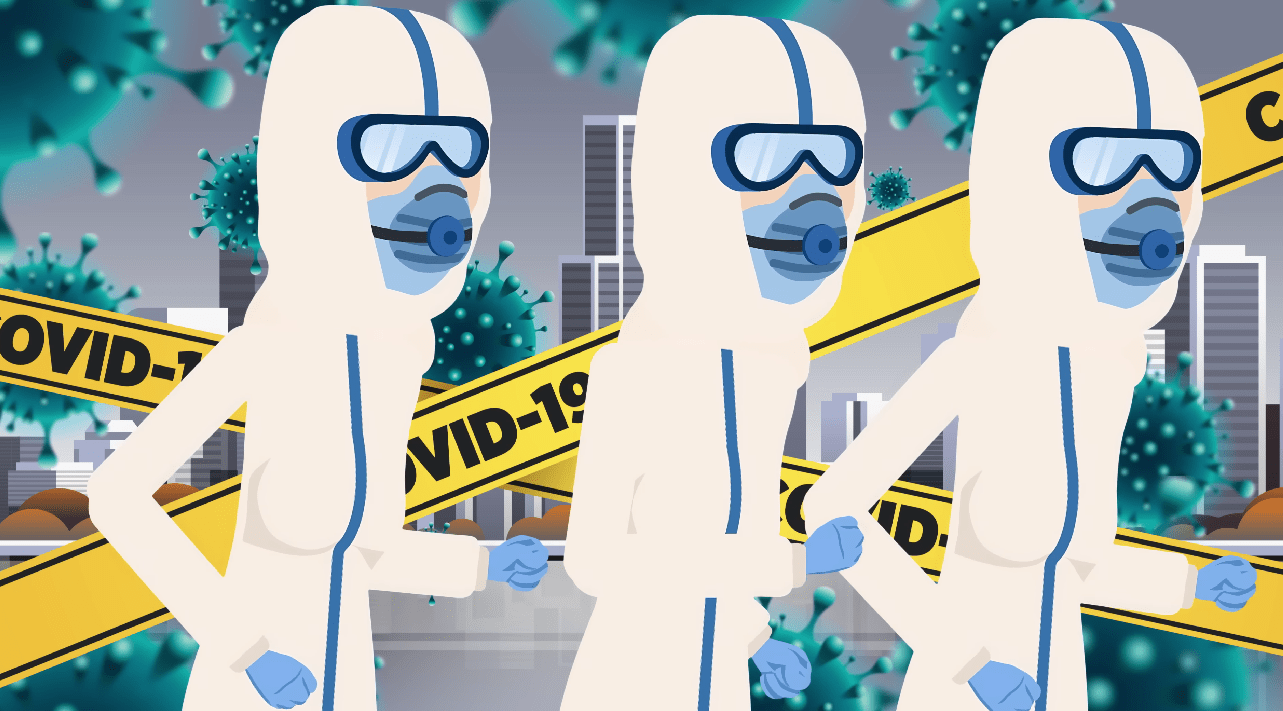
Radiology sits at 51% burnout. While traditionally considered a lifestyle-friendly specialty, radiologists now face increasing workloads due to physician shortages and rising imaging volumes.
The pressure to read more studies faster, combined with the responsibility of catching life-threatening conditions on scans, creates significant stress. Additionally, concerns about AI potentially replacing radiologists add uncertainty to the field.

As we move into the top 5 specialties with the highest burnout rates, the wellness crisis becomes even more serious. But this isn’t just a problem for physicians—it starts much earlier.
The burnout patterns we’re seeing in practicing physicians often have roots that go back years. Medical students battle through years of intense coursework, board exams, and the stress of matching into residency. Premeds face crushing pressure, juggling medical school applications, MCAT prep, research, volunteering, and maintaining perfect grades.
That’s why we started the Med School Insiders Balance and Wellness Scholarship. We want to reward students for managing stellar grades while also balancing their health, passions, and happiness.
Over $3,000 of Med School Insiders services and courses will be awarded to one student who shares their experiences successfully balancing school and a healthy lifestyle, with additional course giveaways for runner-up submissions that stand out.
Submissions are open to any US student planning to apply to medical school. Find out how you can unlock $3,000 towards gaining acceptance at your dream school here.
Now, let’s dive into the most concerning part of our rankings—the specialties where burnout has reached critical levels.
Tied at 51%, family medicine physicians provide comprehensive primary care across all age groups. The breadth of knowledge required, from newborns to elderly patients, creates significant pressure to stay current across multiple medical fields.
With compensation at just over $300,000 annually and increasing administrative burdens from electronic medical records, family medicine doctors often feel undervalued despite being essential to healthcare. The transition to corporate ownership of practices has added productivity pressures that worsen burnout.

Pediatrics comes in at 51% burnout. While caring for children can be rewarding, pediatricians face unique challenges, including managing anxious parents, witnessing child abuse cases, and the devastating experience of losing young patients.
The specialty also has one of the lowest compensation rates at nearly $260,000 annually, largely due to Medicaid reimbursements and fewer procedures compared to adult medicine. Extensive charting requirements pull pediatricians away from patient care, adding to their frustration.
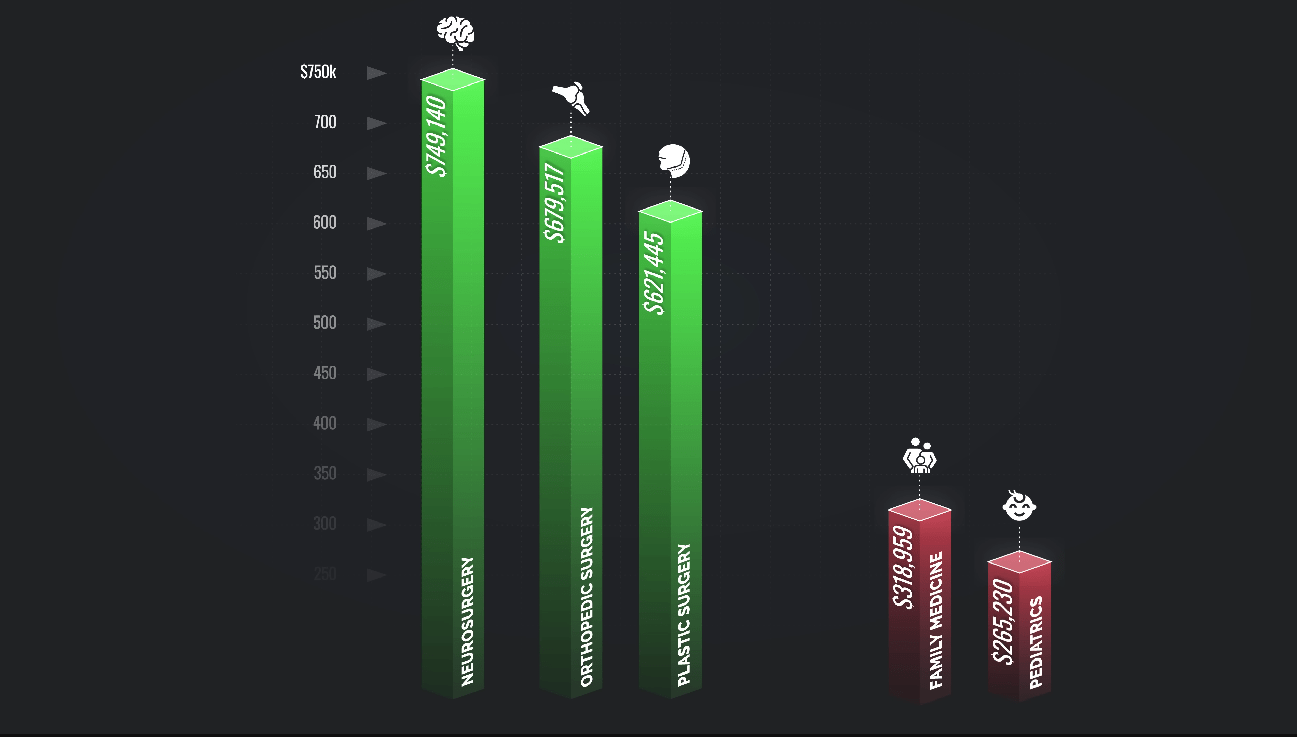
Oncology ties for the second-highest burnout rate at 53%. Oncologists face the emotionally draining reality of delivering devastating diagnoses and watching patients lose battles with terminal illnesses.
The administrative burden continues to increase while resources remain limited. Having to tell patients they can’t afford life-saving treatments or that resources simply aren’t available takes an enormous emotional toll that builds over time.
Also at 53% is OB/GYN. These physicians manage pregnancy, childbirth, and women’s reproductive health, often working unpredictable hours due to labor and delivery call.
The specialty combines high stress—dealing with both the mother’s and baby’s lives—with lower compensation compared to other specialties, averaging over $380,000 annually. The emotional weight of pregnancy complications and the physical demands of being constantly on-call contribute significantly to burnout.
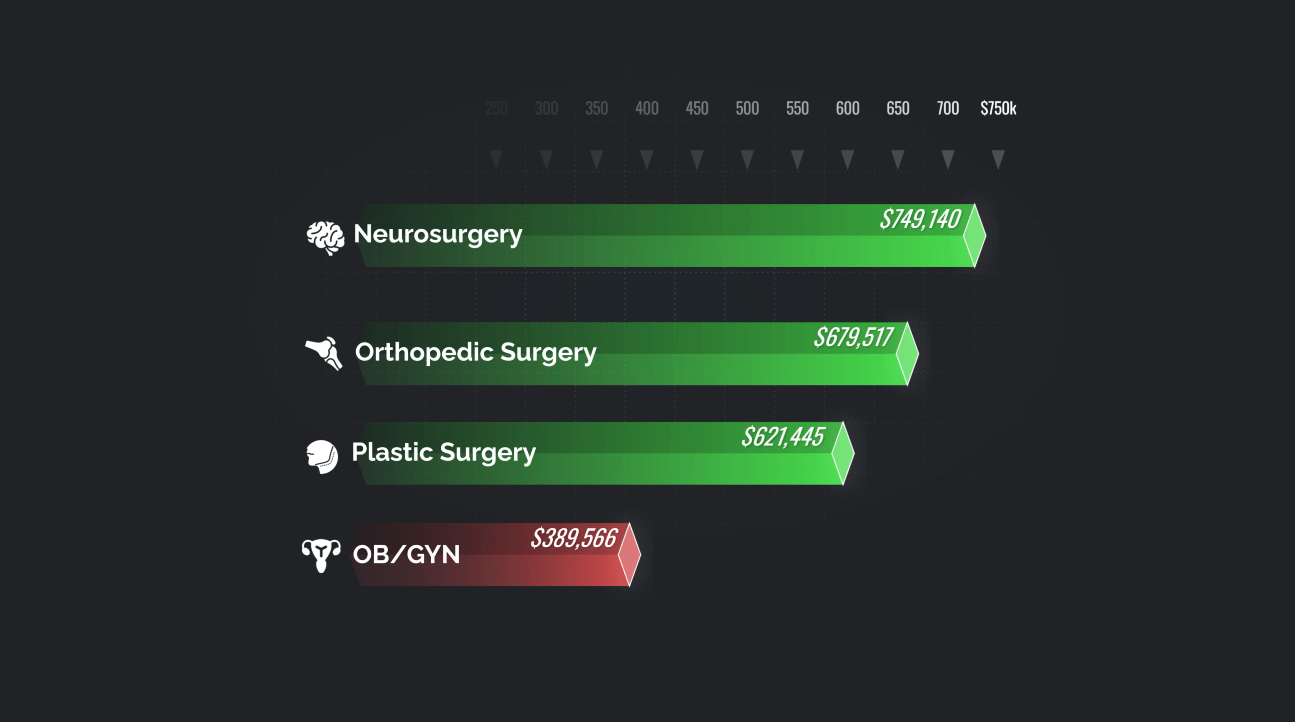
At the top of our list with the highest burnout rate is emergency medicine at 63%. These physicians work on the front lines, treating everything from heart attacks to drug overdoses in high-pressure environments.
The combination of unpredictable schedules, life-or-death decisions, and dealing with frequent cases of drug-seeking behavior and non-emergent visits creates a perfect storm for burnout. The shifts EM doctors work also constantly change between day and night hours, which equates to inconsistent sleep schedules, disrupting their circadian rhythm.
Add in the physical danger from agitated patients and high malpractice risk, and it’s clear why so many EM doctors report feeling overwhelmed.
Looking at these rankings, the differences are striking. While emergency medicine physicians face a burnout rate of 63%, plastic surgeons report just 37%—a 26-point difference. These aren’t just numbers—they represent vastly different daily experiences, stress levels, and quality of life.
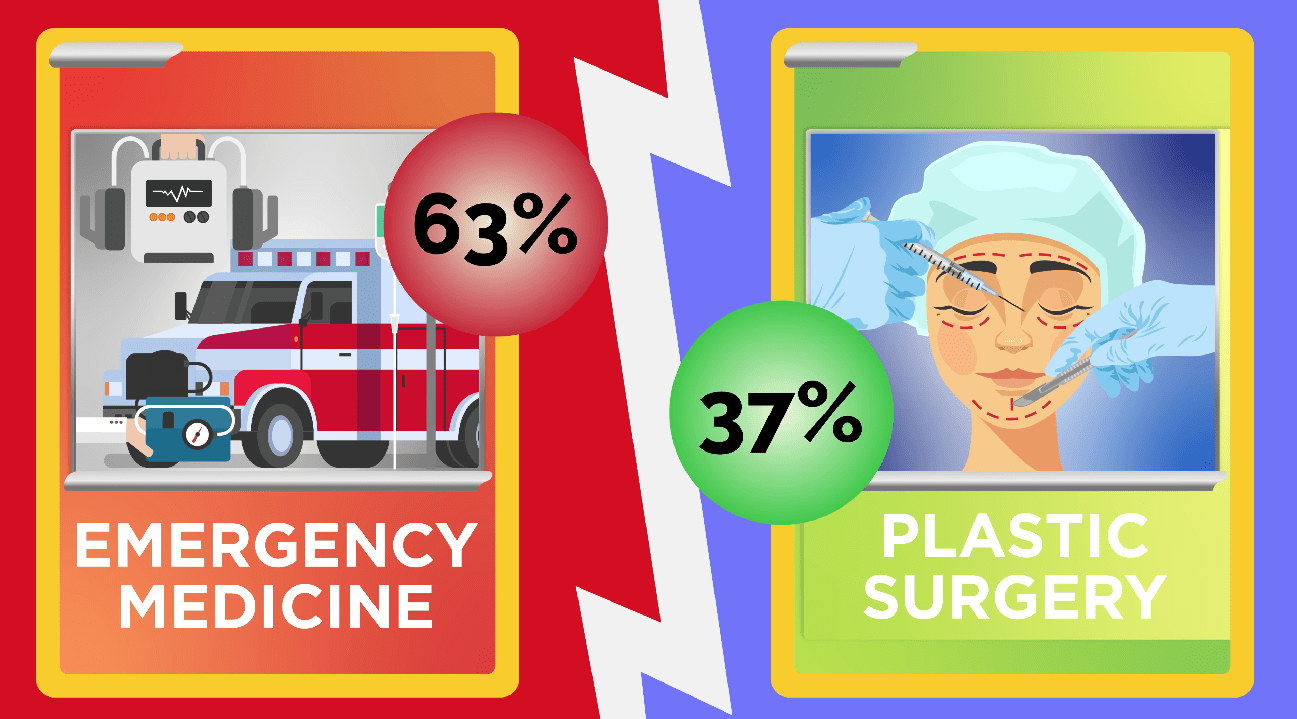
It’s vitally important that you understand what you’re getting yourself into when picking a specialty. Take time to gain experience and do your research to find out if a field is actually right for you.
The place to start is our So You Want to Be playlist, where we cover over 50 medical career paths and give you an inside look into each field. From the day-to-day responsibilities to lifestyle considerations, we break down what it’s really like to work in each specialty.

Asian applicants need the highest MCAT & GPA of any group. This is what that means for Asian med school applicants.

Learn what clinical rotations are required, how to order them, and how to make the most out of each medical school clerkship.